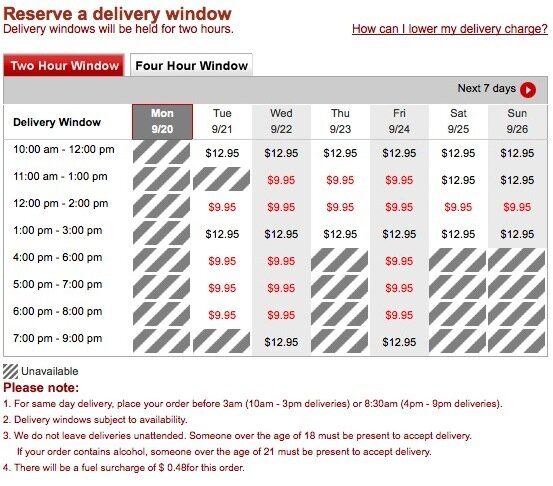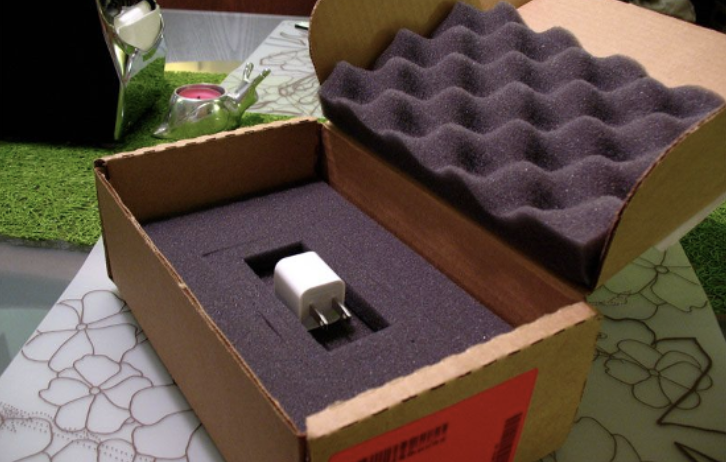Can shopping online help save the planet? Yes, but there’s a catch.
In the face of a worsening climate crisis, saving the planet might seem like a tall order. After all, we’re talking global population-level change, advanced scientific breakthroughs, and international and political will the likes of which few of us can even begin to fathom… right?
Needless to say, it may be tough to imagine how something as easy and convenient (and oftentimes, fun) as shopping online can contribute in any meaningful way.
Then comes COVID-19 – a global health and economic crisis that upended our daily routines, halted the economy in a matter of weeks, and changed deeply embedded consumer habits across every industry overnight.
As storefronts shuttered and consumers grew fearful of brick-and-mortar shopping, we witnessed the most dramatic shift in worldwide consumer behavior in history, as shoppers took much of their business online. According to experts, 3% of grocery spending in the U.S. was online before the pandemic. That number has surged to more than 15% today. These trends are undoubtedly here to stay as many customers downloaded apps, tried new services, and discovered their obvious conveniences.
It turns out there’s another hidden benefit to all this at-home shopping. Over the last several months, we have radically reduced carbon emissions as a planet. While none of us would have wished for it to happen in this way, there are lessons to be learned if we seek to prevent future worldwide catastrophes, such as a climate crisis.
A now-famous 2013 MIT study found online shopping was far more eco-friendly than shopping in brick-and-mortar stores. In fact, the study concluded shoppers who completed the entire buying process online had a carbon footprint almost two times smaller than a traditional shopper. But, there’s a catch. This only works if the people that participate in online grocery don’t also physically shop at the store. More and more people are exhibiting this behavior now.
The point is, in order to reduce our carbon footprint, we need to meaningfully reduce the number of vehicles on the road, and in the process, reduce wasteful delivery packaging. This means streamlining the delivery process, ensuring efficient routing and delivery, and reducing the burdens of on-demand scheduling on couriers and retailers.
Here are four ways online shopping using a smart, automated home-delivery system like HomeValet can help to save the planet:
1. Quit Driving to the Supermarket
“Oh man, I forgot the milk.”
Back into your car, you go. You just doubled the carbon impact of your grocery shopping. Clearly, we can’t eliminate the “I forgot the milk” scenario entirely, so we have to explore efficiencies in other areas to get people off the road.
The realistic offset to this issue is large-scale, aggregated delivery of perishables. The current point-to-point courier model is really a retrofit to an ever-evolving industry. It’s solving a problem of convenience for consumers, but it hasn’t been optimized yet for scale. A lot of waste exists in this dynamic from an environmental perspective, of course, but also from a cost, time, and human resources standpoint. Ultimately, it’s the latter that will drive innovation, and reducing the environmental impact will be a side effect of the industry optimizing its operations.
2. Eliminate the Delivery Window
So, based on the premise that aggregated perishable delivery is the only reliable way to reduce vehicles on the road, there’s another problem we need to solve.
As a grocery operator, if my goal is to serve an entire neighborhood at one time and thusly allow my business to have a supremely efficient delivery operation, perishables pose a particular challenge. They are highly in-demand products and they go bad, fast. So, I’m going to ensure my customer is home when I deliver their groceries. We agree upon a time and I promise to show up at that time if you promise to be there. Makes sense, right?
In theory, sure, but in reality the industry just exchanged this issue for another. By incorporating a delivery window into the process, they have added cost into the process and sacrificed user experience. Delivery windows can actually cause longer wait times due to delivery compression and the inefficient operation drives cost to the consumer. But consumers want delivery faster and cheaper.
Now, if each home had its own secure, automated, temperature-controlled delivery receptacle, couriers could deliver on the first attempt, every time. They can also deliver whenever it’s efficient for them, not for the consumer, as the mad dash to greet groceries at the door goes away. This opens up all kinds of possibilities, including multiple deliveries through one courier vehicle, using effective routing and easy scheduling, hitting multiple homes in one drive. Again, fewer vehicles on the road equals less carbon emission, on a massive scale, period.
3. Reduce Excess Packaging
Traditionally packaging is used for two primary purposes; to present the product in an attractive way and to protect the product from damage. However, in e-commerce, there is a third purpose, which really replaces the first; to obscure the product from view. Afterall, package theft is largely a crime of opportunity and people don’t make purchasing decisions online based on packaging.
The average package delivery today comes with a significant amount of package protection in the form of paper, cardboard, plastic, bubble wrap, foam core, and more. All waste. And, for food-based deliveries, retailers often add even more, expensive, wasteful insulation material and cooler packs.
Now, let’s assume each home is outfitted with its own automated, temperature-controlled delivery receptacle… then why all the delivery packaging? The importance of product protection in packaging has been waning in importance due to the reduction in distance from product fulfillment centers and the delivery point or “store-to-door”. We obviously don’t have to obscure the view of our ordered products; the “Smart Box” does that for us.
With a “Smart Box” on your porch, you’re a savvy, efficient shopper, and have little need of all that wasteful packaging. Groceries and other items are delivered right to your secure, energy-efficient device, and the package pollution is history.
4. Stop Shipping Air
So now, we’re delivering parcels and groceries without all the wasteful packaging. Imagine how much space that will save in each delivery vehicle. Trucks today deliver an unbelievable amount of “air” inside packages, due to clunky square packaging and often literally in the form of package air pillows. This requires multiple, large vehicles to service what could otherwise have been one, simple delivery route. This means smaller trucks delivering more packages to more homes in more efficient ways. Again, any way you look at it, when you take vehicles off the road, or even reduce the size of a vehicle, you save money, you save time, and you save the environment.
Novel solutions to severe, ongoing challenges in the home delivery market have the very real potential to reshape the market and reduce emissions in a material way, and on a large scale. This is particularly true in the grocery industry, where cold-chain compliant receptacles outside of consumers’ homes can ensure effective, safe delivery and efficient routing. Such efficiencies are a few of many population-level changes that will be key in reducing the global carbon footprint, now and into the future.
It has been stunning for all us to witness this immensely challenging pandemic destabilize seemingly unbreakable social norms and habits. Some of these changes have been painful, to say the least. Others may have opened our eyes. Shopping online, using an automated home-delivery system, is possibly one of the easiest, adaptable, and achievable mechanisms for reducing carbon emissions any of us as individuals can adopt.
So skip the store and order online. It’s easier, safer, faster, and you just might save the planet in the process.
Jack Simms is the Founder and COO of HomeValet, a contactless home delivery tech solution for packages, groceries, and other perishable items.
HomeValet’s SaaS solution connects online retailers and couriers with a temperature-controlled Smart Box outside of consumers’ homes. Enables completely contactless and unattended delivery 24/7 of frozen, refrigerated, and pantry items. Opens new channels in grocery, alcohol, and pharmaceutical home delivery. www.homevalet.co




